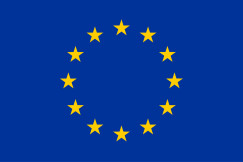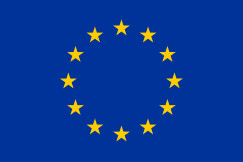Legislation
28 March 2025
Hygiene of foodstuff
Legislation
28 March 2025
1. Healthy, balanced and sustainable diets for all European consumers
2. Prevention and reduction of food loss and waste
3. A climate - neutral food chain in Europe by 2050
+4 more
Login / create an account to be able to react
-
13

The European Union seeks to ensure food hygiene at all stages of the production process, from farms to processing plants and retailers to the final consumer. The hygiene regulations define a set of requirements for the EU that firms working with food must meet in order to ensure that food is safe for consumers.
Editorial team
European Commission - DG SANTE
Topics
EU-27
EU Institutions
-
CoC aspirational objectives
-
-
1. Healthy, balanced and sustainable diets for all European consumers
-
2. Prevention and reduction of food loss and waste
-
3. A climate - neutral food chain in Europe by 2050
-
4. An optimised circular and resource-efficient food chain in Europe
-
5. Sustained, inclusive and sustainable economic growth, employment and decent work for all
-
6. Sustainable value creation in the European food supply chain through partnership
-
7. Sustainable sourcing in food supply chains
-
Share
The EU Rules regarding Food Hygiene cover all stages of the production, processing, distribution and placing on the market of food intended for human consumption.
"Placing on the market" means the holding of food for the purpose of sale, including offering for sale, or any other form of transfer, whether free of charge or not, and the sale, distribution and other forms of transfer themselves.
The rules for food business operators adopted in 2004 and that came into force in 2006 are provided for in the following key acts:
- Regulation (EC) 852/2004 on the hygiene of foodstuffs.
- Regulation (EC) 853/2004 laying down specific hygiene rules for food of animal origin.
The hygiene rules take particular account of the following principles:
- Primary responsibility for food safety borne by the food business operator
- Food safety ensured throughout the food chain, starting with primary production
- General implementation of procedures based on the Hazard Analysis and Critical Control Points principles (HACCP)
- Application of basic common hygiene requirements, possibly further specified for certain categories of food
- Registration or approval for certain food establishments
- Development of guides to good practice for hygiene or for the application of HACCP principles as a valuable instrument to aid food business operators at all levels of the food chain to comply with the new rules
- Flexibility provided for food produced in remote areas (high mountains, remote islands) and for traditional production and methods
Further information:
- Approved EU food establishments
- Guidance platform
- Microbiological criteria
- Non-EU countries authorised establishments
Related regulations:
Regulation (EC) No 852/2004 on the hygiene of foodstuffs.
Regulation (EC) 853/2004 laying down specific hygiene rules for food of animal origin.
Regulation (EU) 2019/624 concerning specific rules for the performance of official controls on the production of meat and for production and relaying areas of live bivalve molluscs.
Regulation (EU) 2019/625 with regard to requirements for the entry into the Union of consignments of certain animals and goods intended for human consumption.
Regulation (EU) 2019/627 laying down uniform practical arrangements for the performance of official controls on products of animal origin intended for human consumption.
Regulation (EU) 2020/2235 laying down rules for the application of Regulations (EU) 2016/429 and (EU) 2017/625 as regards model animal health certificates, model official certificates and model animal health/official certificates, for the entry into the Union and movements within the Union of consignments of certain categories of animals and goods, official certification regarding such certificates.
Regulation (EU) 2021/405 laying down the lists of third countries or regions thereof authorised for the entry into the Union of certain animals and goods intended for human consumption.
Regulation (EC) No 2073/2005 on microbiological criteria for foodstuffs.
Regulation (EU) 2015/1375 laying down specific rules on official controls for Trichinella in meat.
Comments (0)
See also
-
5
Nutrition and Health Claims
- Categories
- 2. Prevention and reduction of food loss and waste 3. A climate - neutral food chain in Europe by 2050 4. An optimised circular and resource-efficient food chain in Europe +3 more
-
17
Regulation on aid compatible with the internal markets
- Categories
- 2. Prevention and reduction of food loss and waste 3. A climate - neutral food chain in Europe by 2050 4. An optimised circular and resource-efficient food chain in Europe +3 more
-
5
Barriers to trade
- Categories
- 2. Prevention and reduction of food loss and waste 3. A climate - neutral food chain in Europe by 2050 4. An optimised circular and resource-efficient food chain in Europe +3 more




